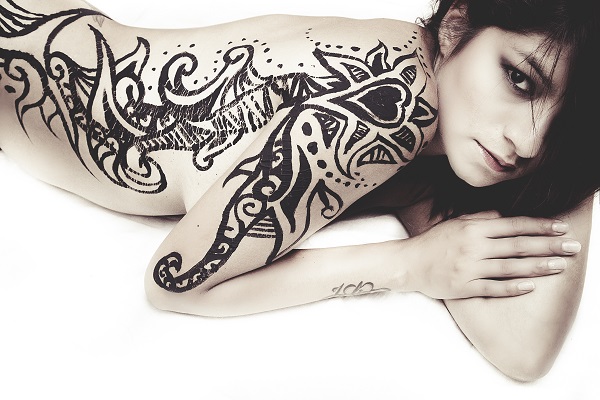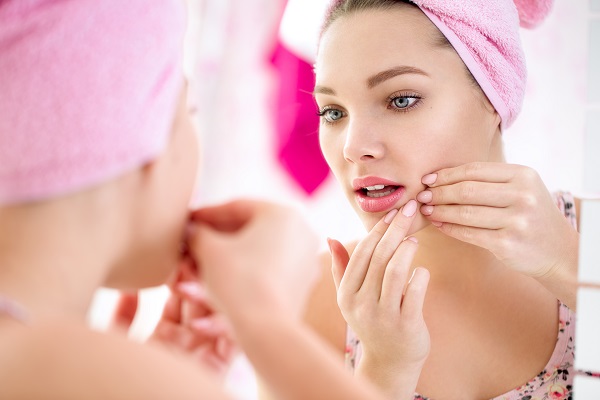How to do microneedling at home, & which derma roller to get?
Recent Posts by Dr. Papantoniou
Can Driving Gloves Keep You Looking Younger?
Wearing sun protective driving gloves and or sunscreen daily can prevent your hands from aging prematurely, and will reduce risks of skin cancers in these areas.
7 Tips To Improve Acne Scars!
Fraxel 2 Sessions
Every day I treat people for acne and acne scarring. Luckily there very effective treatment options available to improve the appearanceof acne scars. There are also some treatment myths that need to be cleared up.
- The first thing I always address with my patients is whether they are still breaking out, if you are still getting acne lesions, you first need to get control of the acne. Otherwise, new scars will be developing, and money and effort will be wasted to treat scars without doing anything to prevent new scars. I make a point to make this clear to my patients, because I believe it is important in order for the outcome to be the best possible.
- The top 3 treatments I believe work the best for acne scarring are the Fraxel (a fractionated resurfacing laser), the pixel (which is a CO2 laser), and microneedling. The Fraxel will take 3-5 treatments, but has a relatively quick recovery, it creates “micro” perforations in the skin with spared healthy skin in between these areas, so the skin heals quickly. Patients will have redness after a treatment, similar to a sunburn, but this resolves usually over 3-7 days, and makeup may be worn. The CO2 laser which is often used together with an Erbium Yag laser, is similar to the Fraxel but is slightly more invasive, with most patients only needing 1-2 treatments. This laser treatment does require a recovery period of 7-10 days, with frequent application of ointments to the face until completely healed. Microneedling pens are gaining popularity for acne scarring. They are mechanized tool with fine needles which are used over the areas of scarring, creating perforations mechanically. The outcome is very similar to results seen with fractional lasers, with less redness and shorter “down time”, this may be a better option for darker skin types than a laser – offers a reduced risk of post treatment hyperpigmentation.
- A lot of people ask me what kind of creams should they purchase. The ingredient that is most helpful in the treatment of scarring is retinoic acid or retinol. Retinoic acid comes in many different formulations from the generic tretinoin, to well-known brands such as Retin A, Renova, Tazorac or Atralin. Retinoic acid/Retinol containing creams can help stimulate new collagen production. Used in a pea size amount in the evening, these creams are usually very tolerable. It is a useful medication to treat the acne and acne scarring together.
- Get a dermroller. If you haven’t heard of a dermroller, imagine a roller with numerous fine needles, this is used to roll over the surface of scars to create small perforations similar to the lasers. These small injuries to the skin heal with new collagen in the areas treated. Out of curiosity, I myself purchased a dermroller, and I cringed in anticipation of pain prior to using it on my cheek…I was surprised that it actually tickled/felt like mild scratching. The needles come in different lengths, I would recommend starting out with a shorter needle, the 1mm, and working up to a longer one. Topical numbing creams are usedfor the longer needle rollers, and the depth of treatment is controlled by the amount of pressure being used when you press down on the rollers. If the roller is used 1-2 times per week, over the course of several months the texture of the skin and scarring can be greatly improved.
- Chemical peels were historically among the first treatments available for scar treatments, but now with advances in technology I generally don’t recommend them in my practice for the treatment of scarring. The reason for this is that in order for a chemical peel to be useful in the appearance of deep acne scarring the peel has to be very strong. A strong peel, such that would be necessary for deep acne scarring should only be used in a very fair skin type, otherwise this can be very risky for skin discoloration and scarring. Because of their limitations of use for lighter skin types, it becomes prohibitive to other patients. It can take many peels in order to see results, meanwhile only several laser treatments would have been necessary to achieve better results for the same price. That being said, I do use chemical peels routinely with great results: for discoloration/hyperpigmentation and dull complexions.
- Time! Time has a role in the treatment of scars, a new scar will often have a red appearance to it. And this can take time to improve. There is a delayed healing process that occurs after a scar treatment has been administered. It can take 3 to 6 months to see the full effect of a treatment, this is because there is a slow tissue remodeling process which occurs with new collagen and elastin being produced in the areas treated. This is why good photographs are so important! Often patients even forget how their skin looked prior to starting their treatments, and are very encouraged when they see how much they have improved.
- Filling pitted acne scars with fillers. Injectibles, such as Restylane (a hyaluronic acid based filler) or Artefill (human collagen based semi-permanent filler) can be used to fill select pitted and boxcar acne scars. The advantage is that the results are instant, without the long wait for tissue remodeling.The drawback is that it is usually not permanent, will not address the textural component of the scarring or skin tone.
If you are interested in what would work best for your skin see your Dermatologist for the best fit for your needs. Scarring does not need to be newer in order to be amenable to treatment, the oldest of scars can still be improved!
Dr. Kally Papantoniou, MD, FAAD
Board Certified Dermatologist: Cosmetic & Medical
Advanced Dermatology Laser & Cosmetic Surgery
Mount Sinai Dermatology Clinical Instructor
Driving Convertibles? Why This Drives Dermatologists Crazy.
Driving with the top down & why this Drives Dermatologists crazy.
Ask these 7 questions prior to a cosmetic procedure!
Ask these 7 questions prior to a cosmetic procedure!
Rash Guards, Why Dermatologists Love Them!
Rash Guards are smart and sexy, learn why your Dermatologist loves them and why you need to get one!
Dr. P gives 5 tips on Spa safety!
Spa treatments: Dr. P’s 5 tips for what you want, and what you don’t want to go home with.
Who doesn’t want to have a relaxing and refreshing Spa visit now and again to recharge your battery and feel pampered for a moment. It is important that we do indulge in these luxurious treatments for our skin and nails, but we must proceed with caution.
I recently was in a large shopping mall, and was quickly pulled in by a kiosk worker who started to buff my 1 fingernail before I could say yes or no to his administration. After I walked away, I was preoccupied with the thought that the very same emery board had been used on countless other people, and I could potentially develop a wart on that finger now! Sometimes the more you know, the worse off you are. However, this is just an example of how you can pick up a skin virus or infection without even knowing, and it is delayed often and will not present itself for weeks oftentimes. A similar incident once occurred during a massage when the masseuse began to use a cactus bristle brush against my skin as part of her routine, and the entire time I was concerned about the reuse of the tool, and was too polite to request that she not use it.
It may seem paranoid and I may be overthinking things, but this only comes to my attention because of what I see regularly in the practice of dermatology, I have many patients that have acquired warts from nail salons, the gym, and even from facials or waxing. Poor young women who have tiny warts disseminated over the face or body, and they will commonly have a history of frequenting a spa or salons. When you are using instruments on patients and not properly sterilizing them it can lead to the transmission of diseases, though not life threatening in the cases I have presented they are none the less difficult to treat and unpleasant.
Tips.
1. Seek out a salon or spa that uses a heat autoclave to sterilize their instruments.
You can ask directly if the instruments are autoclaved and they should be able to answer this question. Establishments that use autoclaves will often have their instruments in sealed bags. Other spas or salons will use an alcohol based solution to clean their instruments, this can be helpful, but is inferior to heat autoclaving. Autoclaving entails placing instruments inside a machine which under intense pressure and high heat destroys all organisms on tools and is the gold standard for sterilizing even medical and surgical instruments.
2. Don’t soak your feet in the foot bath in the nail salon.
Unless a disposable liner is being used for each customer, I cannot think of a dirtier place to soak your feet, as appealing as a nice warm soak might sound…I have seen some terrible infections that were picked up at nail salons. One such customer had suffered an amputation of one of her toes due to a salon acquired infection. The issue is that you never know who is going to pick up an infection. The vast majority of people who have these services have no such serious complication, but very commonly will develop a wart or athletes foot.
3. Bring your own nail filers/emery boards, and/or other nail tools if you desire.
When in doubt, you cannot go wrong by being prepared and bringing in your own supplies. You may get a few looks by other customers, and cause the employees to talk a little, but is it worth it to have fewer worries about your health, absolutely! It is not uncommon for many salon goers these days to come prepared with their own trusted equipment.
4. Do not permit the use of any reusable instruments that are not sterilized.
For example: getting a massage and being scrubbed with a brush that is used on other customers. Do not be shy, and don’t let anyone use something that has not been properly sterilized. A nice way of avoiding this awkward moment is to actually be up front and direct with your question before having a service.
5. If you do pick up what appears to be a wart, nail fungus, or another skin infection, do not delay seeking dermatological care, the earlier you start treating the easier it is to fully resolve.
There are so many great treatments to treat warts, and skin or nail fungus, that it makes no sense to waste time before getting treated. In additions, holding off treatment can result in the development of more warts and spreading warts or fungus to your loved ones at home.
Tattoo tips you need to read!
In a time where tattoos are rising in popularity amongst people of all ages it is vital to educate those who are planning on getting “inked,” and especially those who have already had tattoo work, on the proper care of their skin. There are several main points of care that everyone should know:
- Sunscreen: The harmful ultraviolet rays from sun or tanning bed exposures can damage the pigment within tattoos, and will also increase the risk for developing skin cancer.
- Visit a Dermatologist: a routine skin screening for skin cancers is essential, a skin cancer can be difficult to spot within a tattoo, and for this reason tattoos must be carefully examined at least once per year. For this same reason it is best to have a tattoo placed in an area without moles.
- Seek dermatologic care if you develop a rash in the area of the tattoo: very rarely there can be the complication of an allergic reaction to a tattoo pigment. There are also many skin diseases can present within a tattoo as well, for example psoriasis or sarcoidosis can flare in tattooed. If you have a history of a chronic skin condition, first consult with your dermatologist before deciding to get a tattoo.
- If you have a history of poor healing and hypertrophic or keloid scarring, getting a tattoo may induce a keloid and you may want to reconsider having a tattoo placed. The scarring can be very difficult to treat and laser tattoo removal will not reverse the scar.
- Using water based creams and sunscreens can help to preserve the integrity of the pigment in a tattoo. Sun exposure and tanning will age the appearance of a tattoo and cause the pigment to fade. Keeping the skin moisturized will greatly help with the health and appearance of the tattoo.
- Using petrolatum based emollients can actually cause pigment to become dull and washed out over time. Avoid UV exposure without applying sunscreen, minimum SPF 30, with a broad spectrum UVA and UVB blocking product.
The Pimple Emergency!
Who hasn’t had a pimple emergency at one point in their life, if you are lucky and haven’t had to deal with this…then that is just unfair, but maybe take some notes for your friends and family!
First treat the pimple, then camouflage it.
Treat the Pimple
- Ice it: Wrap an ice cube in a soft cloth and apply gently to the affected area for 20-30 seconds, rest for a minute and apply again. Cold reduces blood flow to the area and may reduce swelling and inflammation. Don’t press hard and don’t leave the ice on too long or you may irritate the skin.
- Apply an over-the-counter acne preparation that contains benzoyl peroxide or salicylic acid which kill the bacteria that cause pimples. These creams and lotions also help shed layers of dead cells, leaving skin fresher and rejuvenated. A 2.5% concentration of benzoyl peroxide is sufficient and is less irritating than stronger formulations. Overusing acne preparations will irritate the skin; follow directions precisely.
- Apply an over-the-counter hydrocortisone cream that contains 1% hydrocortisone. This medication provides pain relief, and can help to reduce swelling and redness in the area of the pimple. This should not be used every day, or for acne prevention, if used all over the face every day it can actually promote acne.
Camouflage the Pimple
- Eye drops that are formulated to reduce redness in the eyes can also be effective in reducing the redness and irritation of acne. (Tetrahydrozoline hydrochloride is the ingredient to look for.) Apply to the area with a cotton swab. Or combine with cold by soaking the cotton swab with eye drop solution, freezing for an hour or so, then applying to the pimple.
- Conceal the blemish with a heavy-duty cosmetic concealer. Consider blending two shades to avoid using one that’s either too light or too dark, which will accentuate the pimple. Blend carefully into the surrounding area.
What NOT To Do
- Don’t pick, pop, squeeze or scratch an inflamed pimple. It will take longer to heal, will be more likely to leave a scar and will be harder to camouflage. Try to keep your hands away from your face entirely.
- Don’t use aspirin, toothpaste or other home remedies that aren’t formulated for the skin. They may actually trigger acne or cause irritation.
- Don’t expect a facial, chemical peel or other spa treatment to provide a quick fix. While they may ultimately have beneficial effects, in the short term they are likely to leave the skin red and irritated.
- Don’t overuse astringents, if used appropriately this can help the skin to contract and may shrink the pimple while also reducing the size of your pores. Pharmaceutical astringents that contain benzoyl peroxide or salicylic acid also fight pimple-causing bacteria. Natural astringents include: witch hazel (choose one without alcohol); lemon juice (dilute lemon juice with water and dab with a cotton swab over the area); and green tea (steep a tea bag in hot water, drain and apply directly).
- Don’t apply undiluted tea tree oil, an antibacterial essential oil with anti-inflammatory properties, if used directly this may be irritating to the skin. There hasn’t been much research on its effectiveness but it’s safe to use in diluted form. Dilute with coconut oil or argan oil and dab it on with a cotton swab.
General skin care advice won’t help in an emergency but good skin hygiene will help you avoid those emergencies, In a true pimple emergency call your dermatologist and see if you can be seen that same day, a dermatologist can inject the pimple with low potency cortisone which dramatically helps to resolve the break-out. For prevention, start by washing your face twice a day with a gentle facial cleanser; follow with moisturizer. Pat your face dry with a soft towel; don’t rub. Drink plenty of water. Exercise regularly and shower after exercising to remove excess perspiration from your skin. You can’t completely prevent your skin from acting up but you can reduce the likelihood of it happening at an inopportune moment and be prepared if it does.
Deodorant Myths
Dr. Papantoniou was recently interviewed by Glamour magazine to read more see here: http://www.glamour.com/lipstick/blogs/girls-in-the-beauty-department/2015/06/best-time-to-put-on-anti-perspirant
Is there a right way to put on deodorant to make it the most effective? Some say put on at night but I hear that is a myth.
It is important to first find out what kind of deodorant you are using. There are 2 different types of deodorants: those that are used to only mask odors, and then there are deodorants that contain antiperspirants to stop sweating. Some people like to apply deodorants in the morning and will repeat application during the day, but this is mostly for the pleasant scent and masking of odors, and less so for the actual reduction of sweating. So, if you are trying to get control over both sweating and odor use a deodorant that contains antiperspirant.
The science behind why an antiperspirant works best if applied in the evening is that the area will be more likely to be dry and will penetrate in to the sweat ducts better in order to prevent perspiration in the area, and the ingredients will have stayed in place through the night giving better results for the next day. This is especially true if you shower in the morning, the underarms will be damp and the antiperspirant may not be as effective. In fact the prescription strength antiperspirants that Dermatologists prescribe are recommended to be applied at night for the same reasons. For patients that have difficulty getting control of their sweating I will recommend a prescription strength antiperspirant to be used at night, and then application of a regular deodorant in the morning. If there is still stubborn sweating I will recommend Botox injections every 3 to 6 months, or the Miradry which is a new treatment that has provided a permanent solution for uncontrolled sweating in the patients I have treated.











